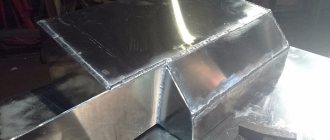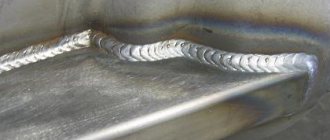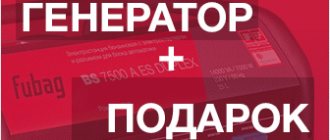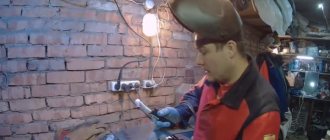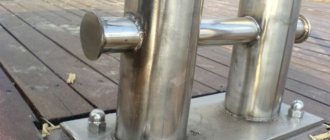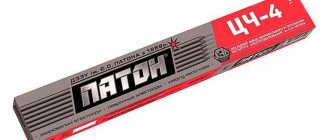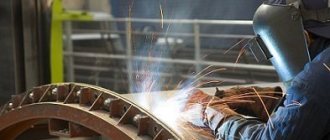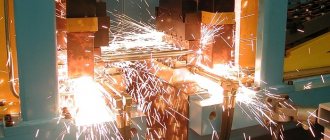Home / Welding technique
Back
Reading time: 3 min
0
3648
Polyethylene film is widely used in various fields. Some uses of it involve the connection of several elements.
For example, when covering greenhouse frames or forming insulating layers during construction.
Welding of polyethylene materials, including film, can be done at home. This article will tell you about the equipment necessary for welding polyethylene, as well as the technology for independent soldering of this material.
- Soldering technology
- Tools and appliances Soldering iron
- Soldering with a soldering iron
Soldering technology
Welding of different parts of a polyethylene film occurs by exposing its edges to a temperature equal to the melting point of the material, followed by tight compression of the layers.
The compression of molten polyethylene connects the parts of the elements at the molecular level, forming a strong weld seam.
However, in order for this seam to be reliable and withstand the load, you need to use suitable welding equipment, as well as observe the nuances of the technology. It is important to maintain a suitable temperature level, which ranges in a narrow range from 130 to 160 degrees Celsius.
Despite the fact that the film polymer compound does not look much like metal in appearance, the rule of thoroughly cleaning the surface also works with it.
Particles of foreign inclusions can disrupt the molecular structure of the junction of two films. Therefore, surface cleaning plays a key role in preparation for welding.
In addition, the following rules must be observed:
- All parts of the material that will be soldered must be made in one batch
- The melting temperature during welding must not be violated. An underestimated temperature will create a weak connection, an overestimated one will deform the material.
- Re-welding of edges that have already been heat treated is not permitted.
Also, the quality and strength of the film seam is influenced by the tool with which it is created. You need to choose the right welding device. It is advisable to take one that will have fewer problems in handling.
Gluing with acrylate glue with filler
The best glue is Weicon Easy-Mix PE-PP. It is specially designed for materials with weak adhesion. Most liquids “stick” to polyethylene very poorly and are simply squeezed out from the point of contact between the surfaces.
But this glue contains the addition of tiny glass beads, which prevents the glue from leaving the gluing area, forming a gap of the required thickness. Therefore, the gluing surface is sufficient and the glue, when hardened, holds the surfaces firmly together. It’s hard to find anything better than gluing polyethylene.
Surfaces must be thoroughly degreased and dried before gluing. Glue can only be supplied from a branded packaging mixer. The best temperature for performing work is +21…+23°С. Liquid glue is good for no more than 2-3 minutes. After applying the layer, you must immediately join the surfaces. Full readiness of the seam (maximum mechanical strength) for polyethylene will be achieved in a few hours (4-5 according to the experience of those who worked with glue). The adhesive joint is cured at a temperature from +15 to +70°C.
Tools and devices
A strong connection of polyethylene film can be made with an iron, soldering iron, or special equipment.
Soldering with an iron
This is a fairly simple way to connect parts of fabrics, because household irons are found in almost every home.
Is it possible to glue polyethylene?
When constructing waterproofing or a greenhouse, it is often necessary to glue together several pieces of polyethylene to obtain a film of the desired size. But how to glue plastic film, and is it possible to do it at home?
The question is not as simple as it initially seems. It is also known from a school chemistry course: the higher the polarity of a polymer material, the better it is amenable to gluing. The polyethylene molecule written in chemical symbols is very similar to a long chain consisting of identical units – CH2-. This uniformity indicates that the electrical charges inside the polyethylene molecule are distributed evenly, i.e. it is non-polar. Therefore, polyethylene sticks very poorly.
Welding a polymer film: a – using an electric soldering iron; b – using an electric iron attachment; c – open flame.
Very often, adhesive mixtures are used for gluing polymer materials, which are prepared from the same materials (or similar ones) dissolved in a suitable solvent. But this will not work with polyethylene - it is practically insoluble in organic solvents.
Some polymers can be glued simply because they have a rough surface. In this case, the adhesive solution fills the irregularities and, when hardened, clings to them, tightly gluing the pieces of material together. But this cannot be done with polyethylene, since it has a perfectly smooth surface.
Therefore, if we talk specifically about the gluing process, then gluing plastic film at home is almost impossible. And in industrial applications it has never been glued together until now.
But although pieces of polyethylene cannot be glued together, they can be welded, or, more precisely, soldered, which has been successfully done for many years in the industry, having developed many methods for such welding . But out of this many methods, there are only two that can be used at home.
Tow: for what? Selecting adhesive for extruded polystyrene foam. How is vapor barrier carried out in floors? More details>>
Special equipment
Large jobs require the use of more serious tools. To create a large-area film joint, you will need special welding equipment.
Such equipment is equipped with settings for the level of pressure, temperature, and the speed of movement of the heated element along the surface of the polyethylene. In household options for forming film seams, there are no such functions.
When welding polyethylene sheets from one batch, the settings are set once. There is no need to reconfigure the equipment for each seam, which speeds up the work.
In addition to setting regulators, soldering machines are equipped with roller mechanisms. These are setting and tension elements that stabilize the speed of advance of the film sheets being welded.
This improves the quality of polyethylene soldering and increases the strength of the connection.
There are devices that use different heating methods: air and contact. Air heating is produced by exposing the material to hot air. Contact involves a heating element in contact with the material.
A connection created by welding polyethylene sheets has a higher strength threshold than one created by gluing with special materials. After all, a soldered seam connects the canvases themselves at the molecular level, without any intermediaries.
DIY film soldering
Polyethylene pipelines are installed in two ways: using fittings and flanges or several types of welding.
The connection requires special fittings (couplings and sockets) and without them. For pipes with a wall thickness less than 4.5 (diameters 50-110 mm), welding using fittings is used; for larger pipes with a thicker wall, butt welding and extruder welding are acceptable.
Diffusion
The diffusion method involves heating the ends to a viscous flow state. The prepared ends of the workpieces are joined and slightly compressed. Movable polymer molecules, under the influence of pressure, move into the parts being connected, mix, freeze in a new position when cooled, form new chemical bonds and ensure reliable adhesion of the pipes to each other.
Bell method
Not the most typical way. There are two options for implementation: using socket pipes and couplings. The method itself is reminiscent of welding polypropylene pipelines: the socket or coupling and the workpiece are heated using a soldering iron with a special nozzle.
Then the workpiece is inserted into the socket of another pipe or coupling, fixed, pressed and held. Welding time – 20 seconds. If couplings are used, then the second pipe is soldered into the coupling in the same way. The cost of couplings is low; products with a socket are rarely found in stores.
The connection is reliable and durable; small diameters can be welded.
Butt welding
Before carrying out work, cut off the polyethylene pipe strictly perpendicularly and thoroughly clean the ends. Then fix the pipe in the welding machine and carefully center it.
Cool the joint, then remove the machine. The work has its own subtleties; it requires two people.
Extruder welding
Extrusion - welding using a small apparatus from which molten polyethylene is extruded under pressure. Raw materials in the form of rods or granules are loaded into the extruder.
Extrusion is used on pressure communications with a wall thickness of more than 6 mm, but it can also be used to patch non-pressure sewer pipelines with a thinner wall. The connection point is heated by a stream of hot air.
It is advisable to chamfer the ends.
Manual welding
When manually welding, before you start joining materials, you need to weld scraps of PVC film, having practiced on them. Having adjusted the temperature and pressure, you can begin working with the base material.
If possible, all seams should be made in a horizontal plane, then the clamping force can be precisely adjusted. The nozzle used should be 20 mm and the rollers 20 and 40 mm.
To obtain a high-quality seam, it is necessary to preheat the area of the PVC film being welded, lightly pressing it with a roller. The welding itself is carried out as follows.
The hair dryer moves along the connection line. The nozzle and, accordingly, the roller are at an angle of 45 ° to the edge of the film, while overheating the lower layer of material must be avoided.
If welding of a wide seam is required, it is done using the pre-welding method. First, a seam is formed in depth, at a distance of 2 cm from the edge of the PVC film.
Then the final formation of the seam is carried out. At the last stage, you need to ensure that the upper edge of the nozzle extends 3 mm beyond the border of the film.
The roller is moved parallel to the nozzle exit, making sure that the distance between them is 10-15 mm.
Scope of use of PVC materials
First of all, it should be said that products made from polyvinyl chloride materials are easy to transport, install, and so on. Similar products can be used in the following areas.
- They are perfect for the manufacture of tent-type architectural structures: various kinds of pavilions, canopies, cafes, and so on.
- Agricultural type construction - shelters for equipment, warehouses, parking lots, and so on.
- They can be used for car awnings.
- Safety devices, in particular pool covers.

